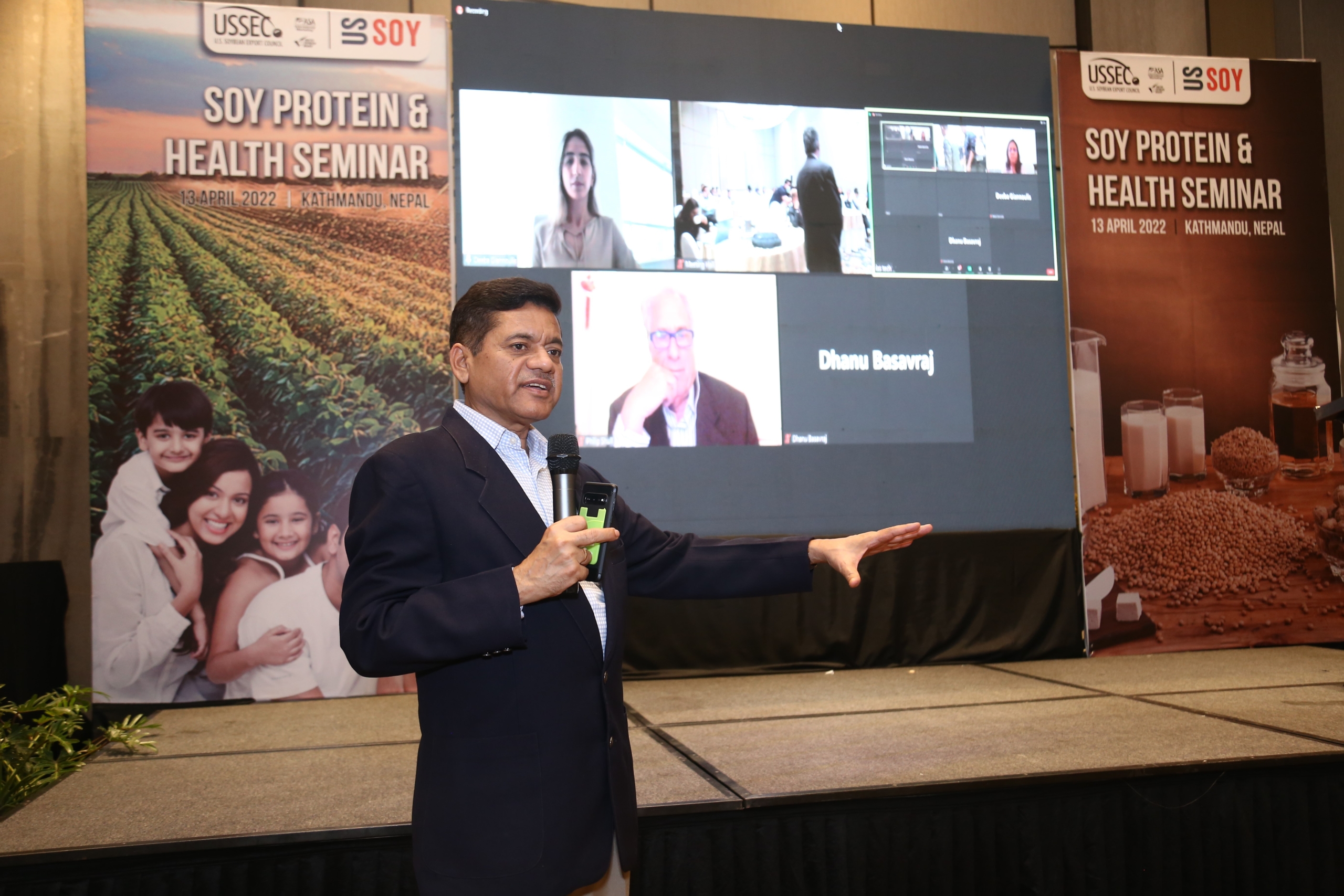By Bruce Abbe, SSGA Strategic Adviser for Trade and Transportation
The much-awaited U.S. Senate version of the ocean shipping reform legislation was formally introduced on Thursday by Sen. Amy Klobuchar (D-Minn.) and Sen. John Thune (R-S.D.).
The legislation earned the initial support of more than 75 business trade organizations at its introduction, including the Specialty Soya and Grains Alliance, as part of a wide cross-section of additional national and state agriculture organizations. Supporting groups also included the Agriculture Transportation Coalition, Minnesota Soybean Growers Association, Minnesota Corn Growers Association and South Dakota Soybean Association, along with a number of notable companies involved in container export shipping such as SSGA member SB&B Foods and Double River Forwarding.
The bill also had 12 bipartisan co-sponsors, including Sens. Tammy Baldwin (D-Wis.), John Hoeven (R-N.D.), Debbie Stabenow (D-Mich.), Roger Marshall (R-Kan.), Gary Peters (D-Mich.), Jerry Moran (R-Kan.), Richard Blumenthal (D-Conn.), Todd Young (R-Ind.), Mark Kelly (D-Ariz.), Marsha Blackburn (R-Tenn.), Cory Booker (D-N.J.) and Joni Ernst (R-Iowa).
The Senate legislation would:
- Require ocean carriers to certify that late fees —known in maritime parlance as detention and demurrage charges — comply with federal regulations or face penalties.
- Shift burden of proof regarding the reasonableness of detention or demurrage charges from the invoiced party to the ocean carrier.
- Prohibit ocean carriers from unreasonably declining shipping opportunities for U.S. exports, as determined by the Federal Maritime Commission (FMC) in new required rulemaking.
- Require ocean common carriers to report to the FMC each calendar quarter on total import/export tonnage and 20-foot equivalent units (loaded/empty) per vessel that makes port in the United States.
- Authorize the FMC to self-initiate investigations of ocean common carriers’ business practices and apply enforcement measures, as appropriate.
- Establish new authority for the FMC to register shipping vessel-sharing alliance exchanges.
It’s been noted that the Senate version of the bill differs slightly from the House version of the legislation, introduced by Rep. John Garamendi (D-Calif.) and Rep. Dusty Johnson (R-S.D.), which passed the with overwhelming support in December.
Both bills require that ocean carriers certify that any detention and demurrage fees they charge shippers, forwarders or truckers comply with federal guidelines on such penalties before automatically billing them and forcing shippers to file information proving the bills are incorrect.
Stronger guarantees of carrier handling of U.S. exports is also the aim of both bills. However, while the House bill would prohibit carriers from rejecting export bookings if the cargo can be “loaded safely and timely” on vessels destined to the destination, the Senate bill would leave it up to the FMC to develop rules and procedures to strengthen ocean carriers’ common carrier responsibilities to handle exports.
“Congestion at ports and increased shipping costs pose unique challenges for U.S. exporters, who have seen the price of shipping containers increase four-fold in just two years. Meanwhile, ocean carriers have reported record profits,” Klobuchar said in a news release. “This legislation will help level the playing field for American exporters so they can get their goods to market in a timely manner for a fair price. As we work to improve our supply chains, I’ll keep fighting to establish trade opportunities for the U.S.”
In a statement, Thune said: “South Dakota producers expect that ocean carriers operate under fair and transparent rules. Unfortunately, that is not always the case and producers across America are paying the price.”
For more details, read coverage in Freightwaves, Journal of Commerce and AgriPulse.
Klobuchar, Booker also address carrier alliances
Separately Klobuchar, a senior member of the Senate Commerce Committee and chair of the Senate Judiciary Subcommittee on Competition Policy, Antitrust, and Consumer Rights, introduced legislation together with Booker aimed to address shipper concerns over ocean carrier alliance practices.
The ocean container carrier industry has gone through much consolidation over that past eight years, and today the 10 largest global steamship lines operate in just three container vessel-sharing alliances.
Klobuchar’s statement noted: “While alliances are intended to benefit the global shipping industry, only three alliances dominate the global shipping industry, creating imbalance of market power.”
The “Ocean Shipping Competition Reform Act” (S. 3586), according to the Klobuchar news release, would allow for third parties to participate in legal cases brought by the FMC against ocean carriers for anticompetitive harm and let successful third parties in those legal cases receive money damages, with additional financial penalties designed to deter anticompetitive conduct.
More transportation updates
Ocean carriers post ‘greatest quarter ever’: Preliminary results of the financial performance of the world’s ocean container carriers at the end of last year, according to transportation media outlet Freighwaves, shows the carriers are recording “history-making profits … trouncing already stratospheric expectations.” More details, including public earnings reports for several major container lines are available here.
USDA announces subsidy for California ‘pop-up’ export container staging yard: American Journal of Transportation and Freightwaves have details about a program USDA announced last week on a partnership the agency started with the Port of Oakland to support agriculture exports from a new 25-acre container staging facility. Key congressional lawmakers say more is needed.
Bulk shipping rates slide: While container ocean rates continue at high levels, bulk shipping rates reportedly are declining due largely to a slowdown in China’s steel production. That affects rates for shipping bulk agriculture commodities, according to American Journal of Transportation.
West Coast port congestion numbers reported: According to a Northwest Seaport Alliance (NWSA) operations report, as of February 3, the number of ships waiting to berth at the Seattle and Tacoma terminals were down to just five vessels. Prince Rupert also had five ships waiting; Vancouver, B.C., had 14 waiting; and Oakland had 13 waiting. Los Angeles and Long Beach, the two largest U.S. container ports had 89 ships waiting, using a new container vessel queuing process for the California ports.
Check out a video on NWSA’s new T5 terminal: You can get a look at NWSA’s new big-ship-ready modernized T5 terminal, with the largest cranes in the world, in a video posted on YouTube. MSC is the first ocean carrier with regular scheduled service at the now open terminal.





